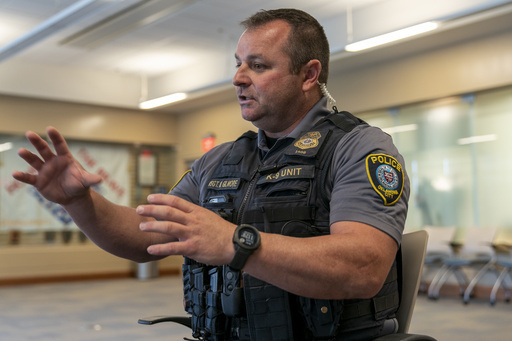
In Oklahoma City, police sergeant Matt Gilmore and his K-9 dog, Gunner, were equipped with a body camera that captured their search for suspects. Typically, Gilmore would spend up to 45 minutes writing a detailed report after such searches, but this time, artificial intelligence (AI) was used to generate the initial draft. The AI tool processed all sounds and radio transmissions from the body camera’s microphone and produced an accurate report in just eight seconds. Gilmore praised the AI-generated report for its accuracy and flow, noting that it even included information he had overlooked, like the color of the suspects’ car mentioned by another officer.
Oklahoma City’s police department is among the few that have started experimenting with AI chatbots to create initial incident reports. While many officers appreciate the time-saving aspect of this technology, concerns have been raised by prosecutors, police oversight groups, and legal experts regarding potential implications for the criminal justice system. One of the main worries is how relying on AI to author reports might impact prosecutions and imprisonments.
Built on technology similar to ChatGPT and developed by Axon, a leading provider of body cameras and Tasers, the AI product called Draft One has garnered positive feedback within the law enforcement community. Axon’s CEO, Rick Smith, sees this technology as a significant advancement in streamlining police work, reducing the tedious task of data entry that officers often encounter. Nevertheless, concerns have been voiced about ensuring that officers take responsibility for the content of the reports since they may need to testify in court about their observations.
While law enforcement agencies have incorporated AI into various aspects of policing, such as license plate recognition and suspect identification, using AI to create police reports is a relatively novel development. This innovation has sparked discussions about privacy, civil rights, and the potential for bias to be embedded in AI technology.
Community activists like aurelius francisco in Oklahoma City have raised alarm about the implications of utilizing AI for incident reports. Concerns have been expressed regarding the possibility of automated reports facilitating unwarranted surveillance and violence against marginalized communities. In response to these apprehensions, some police departments, including Oklahoma City, have limited the use of AI-generated reports to minor incidents that do not result in arrests.
Despite the initial success and popularity of the AI technology in some police departments like Lafayette, Indiana and Fort Collins, Colorado, challenges persist. Axon initially experimented with using computer vision to interpret video footage but shifted focus to audio analysis to address concerns related to privacy and biases in policing.
As AI-generated police reports become more widespread, various stakeholders, including legal scholars like Andrew Ferguson, stress the need for robust public dialogue on their implications. Questions remain about the reliability of AI-generated versus human-generated reports, especially considering the potential for false information to be inadvertently included. Ferguson emphasizes the pivotal role of police reports in legal proceedings and urges caution in embracing new technologies that could impact individuals’ liberty.
Overall, the introduction of AI technology in law enforcement, particularly in generating police reports, is prompting crucial conversations about its benefits, drawbacks, and ethical considerations. As the technology progresses, it is essential for law enforcement agencies and policymakers to navigate these complexities thoughtfully to uphold transparency, fairness, and accountability in the criminal justice system.
